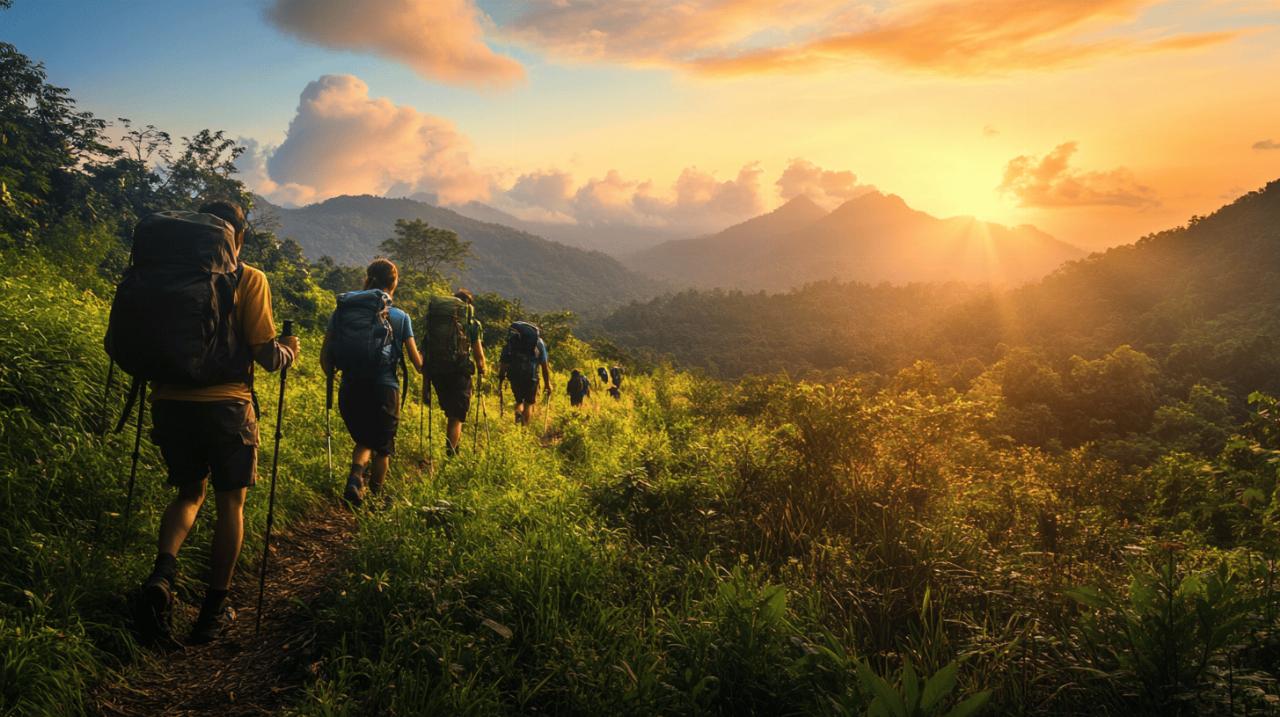Embarking on a journey is more than just visiting new places – it's about creating stories and experiences that stay with you long after you've returned home. Whether you're a seasoned globetrotter or planning your first international expedition, knowing how to craft a memorable adventure requires thoughtfulness, flexibility, and a dash of adventure. Let's explore how you can transform ordinary trips into extraordinary memories with some unique approaches to travel planning.
Crafting your ideal journey
The foundation of any remarkable adventure begins with thoughtful planning that reflects your personal interests and travel style. Rather than following the crowd, consider what truly excites you about exploring new places. Are you drawn to outdoor adventures, cultural immersion, or perhaps vibrant nightlife scenes? I've spent time Travel Myself across continents from the beaches of Sri Lanka to the highlands of Ethiopia, and I've learned that the most fulfilling journeys start with honest self-reflection about what you want to experience.
Creating a personalised travel blueprint
A well-crafted travel plan balances structure with spontaneity. Begin by checking your passport validity – ensure it extends at least six months beyond your return date to avoid complications at borders. Next, research visa requirements well in advance as these can vary significantly depending on your nationality and destination. Setting a realistic budget is crucial and should account for all major expenses including flights, accommodation, meals, local transport, activities, and comprehensive travel insurance.
Digital tools can revolutionise your planning process. Google Maps offers a My Maps feature that allows you to plot recommendations and visualise efficient routes between destinations. For collaborative planning with travel companions, Google Drive provides shared documents that can be edited simultaneously and accessed offline during your journey. Pinterest and Instagram hashtags offer authentic glimpses of potential destinations beyond polished tourism photographs – follow official country accounts for the most reliable visual information.
Seeking out hidden gems rather than tourist traps
The difference between an ordinary holiday and an extraordinary adventure often lies in venturing beyond the well-trodden path. While iconic landmarks deserve their reputation, the most cherished travel memories frequently come from unexpected discoveries. Take time to research lesser-known attractions, neighbourhoods, and experiences that reveal the authentic character of your destination.
Travel blogs written by experienced wanderers can provide invaluable insights that guidebooks might miss. Unlike travel agents who may recommend certain activities or accommodations based on commission arrangements, independent bloggers typically share genuine experiences and practical advice. For instance, one traveller discovered that an Australian tourist visa advertised by an agency for £14 was actually available for free through official channels – highlighting the importance of thorough research.
When selecting accommodation, consider options beyond conventional hotels. Platforms like Airbnb offer unique stays that can provide deeper immersion into local life while often being more budget-friendly than standard tourist accommodations. These alternative lodgings frequently place you in residential neighbourhoods where you can observe everyday life and discover local eateries and shops that cater to residents rather than visitors.
Making travel moments last
 The true value of travel extends far beyond checking destinations off a list – it lies in how these experiences enrich our lives and perspectives. Creating lasting memories requires mindfulness and openness to the unexpected joys that arise during your journey. Some of the most treasured travel stories emerge from unplanned moments and spontaneous decisions that couldn't have been anticipated during the planning stage.
The true value of travel extends far beyond checking destinations off a list – it lies in how these experiences enrich our lives and perspectives. Creating lasting memories requires mindfulness and openness to the unexpected joys that arise during your journey. Some of the most treasured travel stories emerge from unplanned moments and spontaneous decisions that couldn't have been anticipated during the planning stage.
Capturing memories beyond photographs
While photographs serve as wonderful visual souvenirs, consider diversifying how you document your travels. Keeping a journal allows you to record not just what you saw but how you felt, the scents in the air, conversations with strangers, and moments of revelation or challenge. These written reflections often become more meaningful over time as they preserve the emotional texture of your experiences that might otherwise fade from memory.
Collecting small, meaningful items can also create tangible connections to your travels without succumbing to typical tourist merchandise. A metro ticket, a pressed flower, or a handwritten note from someone you met carries stories that mass-produced souvenirs cannot. Create rituals around these objects when you return home – perhaps displaying them thoughtfully or incorporating them into a creative project that allows you to revisit your journey.
Remember to balance documentation with presence. While capturing moments is important, being constantly behind a camera or phone screen can prevent you from fully experiencing the wonder of new places. Set aside dedicated times for photography, then allow yourself to simply absorb your surroundings with all your senses.
Fostering meaningful connections with locals
The most illuminating insights into a destination often come through interactions with people who call it home. Learning even basic phrases in the local language demonstrates respect and opens doors to connections that might otherwise remain closed. Simple greetings, expressions of gratitude, or questions about recommendations can transform your status from observer to welcomed visitor.
Seek opportunities for cultural exchange through cooking classes, craft workshops, or community-based tourism initiatives that benefit local economies. These experiences provide deeper understanding of traditions and daily life while creating personal connections that transcend typical tourist-local dynamics. Sharing meals with residents or participating in local celebrations offers authentic glimpses into cultural practices that formal tours rarely provide.
When planning activities, balance famous attractions with opportunities to simply observe everyday life. Spending an afternoon in a neighbourhood park, visiting a local market, or finding a café frequented by residents can reveal the true character of a place. These quieter moments often become the stories you tell most frequently upon returning home – not because they were extraordinary, but because they allowed you to temporarily step into another way of life.

